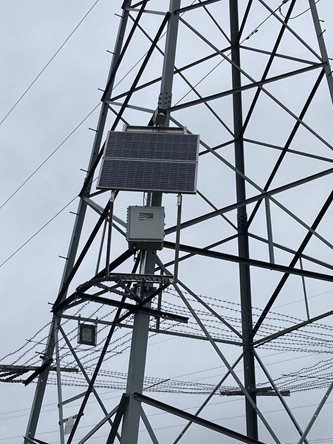What's the project about
The high penetration of Distributed Generation (DG) on the Northern Ireland network has resulted in the network becoming increasingly constrained. NIE Networks' Smart Asset Monitoring (SAM) project will help address network issues and defer capital expenditure of upgrading distribution assets. The SAM project aims to determine the thermal capacity of network assets during different weather conditions, facilitating increased loading of assets without the need for high cost network reinforcement.
1. Real Time Thermal Rating (RTTR)
Overhead lines (OHLs) are thermally rated based on static P27 ratings which are usually based on pessimistic weather conditions e.g. low wind speed and high ambient temperature. Whilst this approach has been successfully utilised by network utilities for a long time, studies show there is potential to enhance the rating of some overhead lines if the real-time thermal ratings are taken into account. Weather conditions vary in time and therefore assets will have a time-varying thermal rating which can be above their static thermal ratings. For example, at a high wind speed the overhead line conductor can dissipate more heat through convection to the surrounding environment. This project will consider whether we can leverage this “wind cooling” effect to implement improved line ratings and defer capital investment in overhead line upgrades to facilitate additional connections.
The key objectives of RTTR of OHLs are:
- Improved utilisation of network assets
- Defer capital reinforcement on 33kV overhead lines
- Facilitate increased loading of assets
- Provide learning for future OHL routing and conductor sizing
- Assess the impact on existing assets including lifespan and maintenance requirements
2. Enhanced thermal modelling of primary transformers
Due to the connection of generation on the distribution network many primary (33/11kV) transformers are operating in reverse power flow. This project will implement enhanced thermal modelling of primary transformers using historic data including winding temperature indicators (WTIs), with the view of identifying the forward and reverse power flow ratings at different weather conditions.
The key objectives of this project are:
- Improve utilisation of primary transformers
- Analysis of the continuous transformer rating in both forward and reverse power flow
- Provide learning and recommendations for short-term overloading of the transformers
- Assess the impact on transformer lifespan and maintenance requirements
Progress
- Appoint consultants to support the project team
- Technology assessment complete
- Trial site selection criteria developed and site selection complete
- System architecture agreed and equipment specification developed
- Equipment procurement complete and acceptance testing undertaken
- Overhead line monitoring equipment installed at 7 locations
- Transformer winding temperature sensors installed at 12 locations
- Network topology reconfigured to promote network utilisation and temperature change
- Data collected from all trial locations and analysed
- Overhead line analysis outcomes disseminated amongst internal NIE Networks' Subject Matter Experts
Documents
More information on the SAM project can be found here.

Overhead Line Monitor
